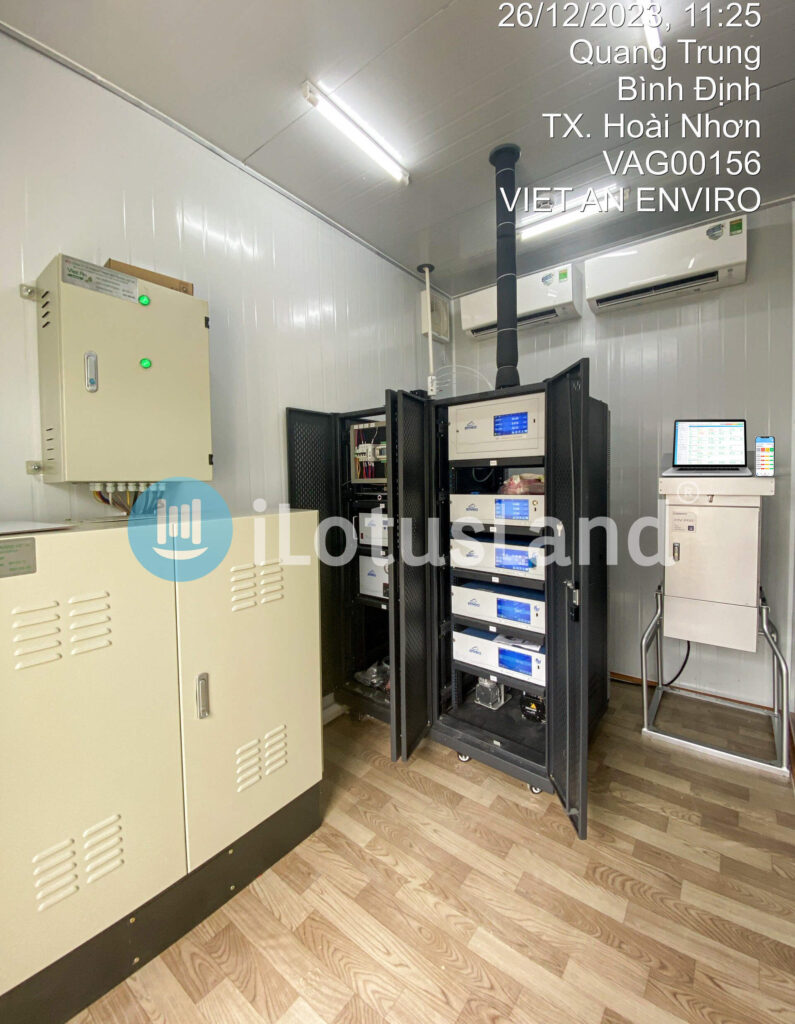In today's world of enterprise information technology, there are numerous factors that a company must carefully consider to decide whether deploying cloud infrastructure, On-Cloud, is the appropriate choice. Conversely, there are many companies that cannot adopt On-Cloud and instead opt for On-Premise deployment. What is On-Premise vs. On-Cloud? What are the significant differences between on-premise and on-cloud, and what are the advantages and disadvantages of each model? Let's explore together to gain a clearer understanding of this crucial decision-making process.

On-Premise vs. On-Cloud
What is On-Premise?
"On-Premise" is a term in the field of information technology, literally translating to "At Location" in Vietnamese. In the context of technology and software, "On-Premise" refers to the deployment and operation of applications, systems, or services directly on the organization's infrastructure, often on internal servers and network infrastructure.
Simply put, when an organization adopts the On-Premise model, they self-manage and maintain software and infrastructure at their physical location rather than using cloud services or resources from external sources. This may involve installing software directly on in-house
What is On-Cloud?
"On-Cloud" or "Cloud" are terms used to describe the deployment and delivery of services, applications, or resources through cloud computing. In this context, both "On-Cloud" and "Cloud" mean utilizing resources from cloud service providers instead of deploying and managing everything on the organization's local infrastructure.
When an organization transitions to the On-Cloud model, they don't need to manage physical servers and infrastructure at their location. Instead, they can use computing resources, storage, and services over the internet from cloud service providers like Amazon Web ServicesAWS), Microsoft Azure, or Google Cloud PlatformThis brings high flexibility, easy scalability, and reduces the burden of infrastructure management. Cloud services often include Infrastructure as a Service (IaaS), Platform as a Service (PaaS), and Software as a Service (SaaS).
Key Differences Between On-Premise vs. On-Cloud
In simple terms, the difference between on-premise and on-cloud software lies in location. On-premise software is installed and operates on a company's own hardware infrastructure, locally hosted, whereas on-cloud software is stored and managed on the provider's servers, accessible through a web browser or other interfaces.
For instance, the Environmental Resources Department of Binh Dinh Province utilizes iLotusLand - On - Cloud software for monitoring and managing environmental data. All monitoring data is stored and managed on the servers of iLotusLand Vietnam Company, the cloud service provider.
This means that the Environmental Resources Department doesn't need to invest in building and maintaining a dedicated server infrastructure. Instead, they leverage the services provided by iLotusLand, saving costs and focusing on efficient environmental data management.
Using On-Cloud software like iLotusLand offers several benefits, including flexibility in management and scalability, cost savings on initial investments, and the ability to access data from anywhere via the internet, enhancing performance and convenience in daily operations.

On-Premise Software
Whether a company deploys its application on the cloud or opts to keep them on their in-house infrastructure - On-Premise, data security remains a top priority. However, for businesses in heavily regulated industries, the decision may have been made to retain their applications On-Premise. Knowing that a company's data is stored on servers and the IT infrastructure of their own enterprise can provide greater peace of mind.
On-Premise software requires businesses to purchase software licenses. Since the software is licensed, and the entire version of the software is hosted on the organization's in-house infrastructure, this ensures a higher level of security compared to cloud infrastructure. So, if a company needs all these security measures, why would they want to deploy on the cloud?
The drawback of the On-Premise environment is the deployment costs associated with managing and maintaining the entire solution, which can be much higher than On-Cloud. On-Premise demands that businesses have servers, software licenses, integration capabilities, and available IT staff to support and manage any potential issues. This is not to mention the maintenance workload a company has to undertake when issues occur or certain features malfunction.
On-Cloud Software
On-Cloud and On-Premise differ significantly at a crucial point. In an On-Premise environment, the company manages everything at their workplace, whereas, in a cloud environment, a third-party service provider manages everything for you. This helps companies pay based on demand and scalability, depending on overall usage, user requirements, and company growth.
A cloud server uses virtualization technology to store a company's applications remotely. With no capital costs, data can be regularly backed up, and the company only needs to pay fees for the resources they use. For organizations planning substantial global expansion, the cloud becomes more attractive as it allows easy connectivity with customers, partners, and businesses anywhere without much effort.
Moreover, On-Cloud provides the ability to access and operate almost instantly since everything is pre-configured. Thus, any newly integrated software into your environment is ready to use immediately after registration. With the ability to access and operate instantly, anytime, anywhere, installation and configuration are no longer barriers, and users can access applications immediately.
This development not only reduces installation costs for customers but also enables software companies to create a recurring revenue model based on a yearly cycle.
Distinguishing Between On-Premise and Cloud
| Type | On-Premies | On-Clound |
| Deployment | Deployed directly on the organization's infrastructure and servers. | Deployed on a third-party cloud infrastructure via the internet. |
| Cost | Requires significant upfront costs for hardware, software, and deployment. | Cost based on a pay-as-you-go model, paying for actual usage. |
| Infrastructure Management: | The organization is fully responsible for managing and maintaining the infrastructure. | The cloud provider is responsible for infrastructure management, reducing the burden on the organization. |
| Expand | Scaling requires additional hardware procurement and new deployments, often time-consuming. | Flexible scalability, with the ability to increase or decrease resources immediately according to demand. |
| Security | The organization holds control and can customize security as needed. | Requires trust in the cloud provider, but many services have robust security measures. |
| Flexibility and Access Convenience | Limited remote access and flexibility. | Easy access from anywhere via the internet, particularly convenient for remote work. |
| Payment | Large upfront payment, less flexibility in costs. | Flexible payment based on resources and actual service usage. |
| Deployment Speed | Deployment time is often longer due to complex installation and integration processes. | Rapid deployment with pre-configured cloud capabilities. |
In summary, the decision between choosing On-Premise and Cloud deployment often depends on the specific require
Conclusion
The decision between the On-Premise and On-Cloud models is not just a technological issue but also reflects profound considerations regarding business strategy and data management principles. The significant differences between these two models include costs, infrastructure management, and the level of control.
On-Premise offers high security and control, making it suitable for industries with strict security and regulatory requirements. However, this comes with a significant upfront cost and full infrastructure management responsibilities.
On the contrary, On-Cloud provides flexibility and cost-effectiveness, reducing the burden of infrastructure management for the organization. However, relying on cloud service providers implies placing trust in their systems.
Most importantly, the decision between On-Premise and On-Cloud should be based on specific business needs, budget constraints, and strategic objectives. Understanding the differences between these two models is key to making an informed decision and ensuring that technology aligns with the organization's goals.
—————————————–
For environmental monitoring solutions, contact iLotusLand:
𝗘𝗺𝗮𝗶𝗹: info@ilotusland.com
𝗛𝗼𝘁𝗹𝗶𝗻𝗲: +84 909 403 778
𝗪𝗲𝗯𝘀𝗶𝘁𝗲: www.ilotusland.com






